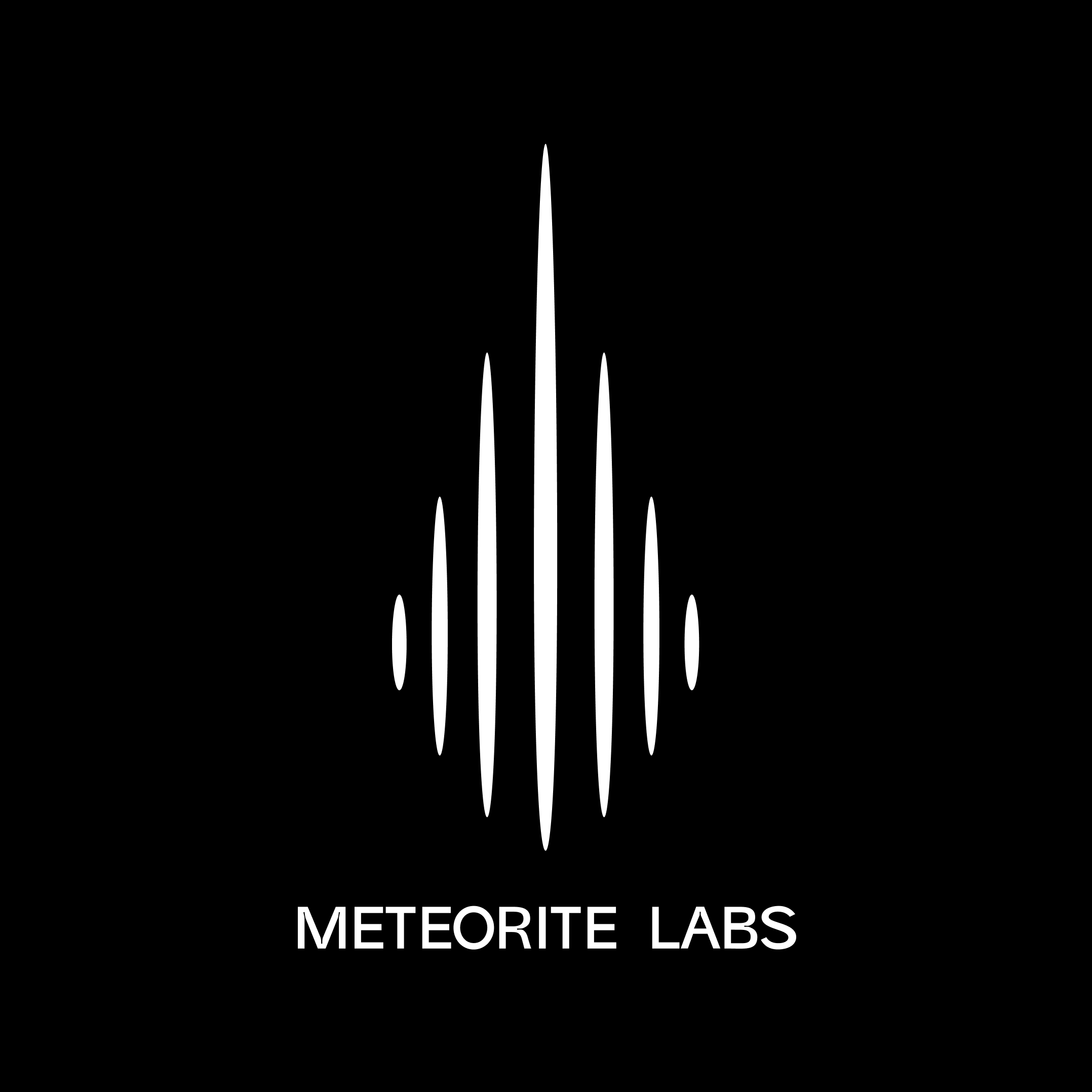As Trump is about to enter the White House again as the US President, investors are full of expectations for the future of the crypto market. Since Trump won the presidential election, Bitcoin has broken the milestone of $100,000. And $Trump, officially announced by Trump, reached a total market value of $82 billion in just two days, soaring 472 times from the opening peak. Alphas of other American celebrities and politicians have emerged. The president is issuing coins not only gave a shot in the arm to the crypto market, but also more liquidity on and off the field will further accelerate the rise of the Solana ecosystem.
During last years campaign, Trump promised to include all bitcoins currently held by the US government and those purchased in the future into the National Strategic Bitcoin Reserve. He will stop the governments crackdown on cryptocurrencies within an hour of taking office and propose policies that can promote the overall development of cryptocurrencies. If Trump can really fulfill these support promises, then the United States may greatly accelerate the popularity of cryptocurrencies and become the global cryptocurrency center.
We expect that Trump will give priority to promoting the FIT21 Act (Financial Innovation for Technology in the 21st Century Act), so that tens of thousands of cryptocurrencies can be almost clearly divided into commodities and securities , and promote a new round of entrepreneurship and innovation under the reasonable supervision of the SEC and CFTC. Traditional VCs and funds can enter the market under the guarantee of compliance, bringing the market value of the entire crypto market to a new height. For investors like us, different types of cryptocurrencies have different risk characteristics. The price fluctuations of commodity cryptocurrencies may be related to factors such as market demand and supply, while securities cryptocurrencies may be affected by factors such as project operations and market expectations. After clarifying the classification, we can also more accurately assess the risks of the cryptocurrencies we invest in and make more reasonable investment decisions.
1. FIT21: Clarifying the attributes of “commodities” and “securities”
From the perspective of US regulation, since 2015, whether cryptocurrencies are commodities or securities has been a topic of debate between the SEC and the CFTC.
SEC’s judgment basis: Howe Testing
-Is there any capital investment involved?
-Is there any profit expectation?
-Is there a common entity?
CFTC’s judgment is based on:
-Is it fungible?
-Is it marketable?
-Is it of a certain scarcity?
In the 21st Century Technology Financial Innovation Act (FIT21 Act) passed by the U.S. House of Representatives in May this year, a broad digital asset regulatory framework was established by clarifying the regulatory responsibilities of the two regulatory agencies and updating the existing securities and commodity laws. The framework classifies cryptocurrencies (digital assets) other than stablecoins into two categories:
- Digital commodities, regulated exclusively by the CFTC
- Restricted digital assets are actually similar to securities, but they are not explicitly stated and are exclusively regulated by the SEC
Hereinafter, they will be referred to simply as “commodities” and “securities”.
FIT21 proposes five key factors to distinguish whether cryptocurrencies are securities or commodities
Howey Test : Consistent with the SEC’s historical basis, if a cryptocurrency purchase is considered an investment and the investor expects to profit from the efforts of the entrepreneur or a third party, it is generally considered a security.
Use and Consumption : If a cryptocurrency is primarily used as a medium for consumption of goods or services, e.g. tokens can be used to purchase specific services or products, it may not be classified as a security but rather as a commodity.
Degree of decentralization : The bill places special emphasis on the degree of decentralization of the blockchain network. If the network behind a cryptocurrency is highly decentralized and there is no central authority controlling the network or the backdoor of the asset, the asset will be considered a commodity.
Functionality and technical characteristics : If a cryptocurrency primarily provides economic rewards through automated processes on the blockchain or allows voting to participate in governance, they are likely to be considered securities.
Marketing activity : How a cryptocurrency is promoted and sold in the market is also an important factor. If a token is primarily marketed with the expected return on investment, it may be considered a security.
From the perspective of use and consumption, public chains and PoW tokens are more in line with commodity standards . Their common feature is that they are mainly used as a medium of exchange or payment method, rather than as an investment in the expectation of capital appreciation. Although in the actual market, these assets may also be purchased and held speculatively, from the perspective of design and main use, they are more likely to be regarded as commodities.
The bill mentions that if no relevant person has owned or controlled more than 20% of the voting rights in the past 12 months, this indicates that the digital asset has a high degree of decentralization. This usually means that no single entity or small group can control the operation or decision-making of the asset. From this perspective, a high degree of decentralization is an important factor in promoting assets to be regarded as commodities, because it reduces the control of a single entity over the value and operation of the asset, which is consistent with the characteristics of commodities, that is, they are mainly used for exchange or use, rather than for investment returns.
From the perspective of functionality and technical features, utility tokens governed by DAOs are more likely to meet the criteria for securities . “If a cryptocurrency primarily provides economic rewards or allows voting for governance through automated procedures on the blockchain, they will be considered securities” because this indicates that investors are expecting to benefit from the efforts of a third-party enterprise.
There is a paradox: if a utility token is also highly decentralized in terms of governance, shouldn’t it be defined as a commodity?
The point that should be considered here is, is the main purpose of the holder holding the asset to obtain financial returns (for example, through asset appreciation or dividends), or to use the asset to conduct transactions and other activities on the platform or network?
In the context of the approval of the ETH spot ETF application (Form 19 b-4), the definition of ETH is more inclined to functional use. The nature of its pledge and governance is more to maintain network operation rather than economic returns . Therefore, in the future, L1 digital assets similar to ETH can theoretically be regarded as commodities if they meet preconditions such as the degree of decentralization.
From this perspective, if the governance direction of protocols governed by DAO, including DeFi and L2, is closer to obtaining economic returns or dividends , their positioning is more likely to be defined as securities.
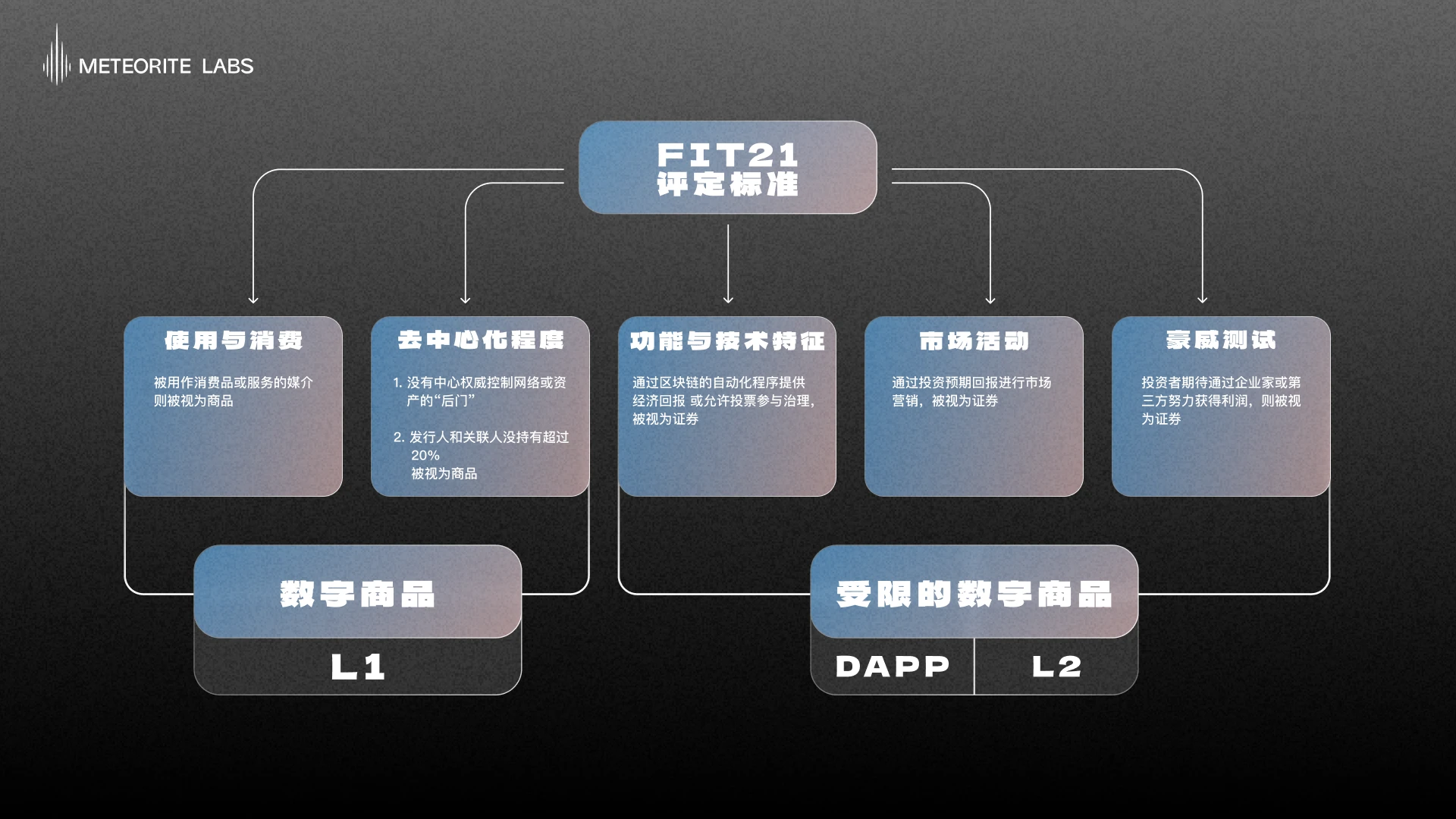
Therefore, in summary, based solely on the FIT21 bill, we will temporarily regard L1 tokens as commodities, and protocol tokens with DAO governance and L2 tokens as securities.
At the same time, we found that this result is basically consistent with the Type 1 (digital goods) and Type 2 (equity governance tokens) methods proposed by Frax Finance. We will explain this in detail in the third part.
Although it was passed by the House of Representatives as early as May, FIT21 has not yet been voted on in the Senate. Analysts at JPMorgan Chase believe that when Trump officially takes office, several stalled cryptocurrency bills, including FIT21, may be quickly approved.
With Trump about to take office in the White House, FIT21 may be coming soon, which will create a stable and effective regulatory environment for the healthy growth of the crypto market. We need to continue to pay attention to the progress of the bill (House of Representatives √ — Senate — Presidential Signature).
The bill clearly defines the concept of decentralization. No one can control the entire blockchain network alone, and no one who owns more than 20% of digital assets or voting rights is likely to be considered a digital commodity. The definition of commodity cryptocurrencies is expected to strengthen the expansion of these cryptocurrencies in the payment field. At the same time, with a high degree of decentralization, more ETFs may come out. SOL ETF is expected to become the third crypto spot ETF after ETH ETF, as Geoffrey Kendrick, head of foreign exchange and digital asset research at Standard Chartered Bank, and Anthony Scaramucci, founder and managing partner of Skybridge Capital, said. There are also XRP and LTC, which have recently soared due to ETF rumors.
As for restricted digital assets, i.e. security tokens, such as DeFi, the FIT21 Act will be more conducive to DeFi compliance and may even trigger mergers and acquisitions. Whether it is entrepreneurship or traditional finance, investing in DeFi projects will become more convenient . Considering the attitude of traditional financial institutions represented by BlackRock towards the crypto market in recent years (promoting the listing of ETFs and issuing US debt assets on Ethereum), DeFi is likely to be their key layout area in the next few years. For the end of traditional financial giants, mergers and acquisitions may be one of the most convenient options, and any relevant signs, even if it is just the intention of mergers and acquisitions, will trigger a revaluation of the value of DeFi leading projects.
2. In-depth analysis of L1, L2, and DeFi: Are they commodities or securities?
BTC
The value of a commodity depends on labor time, in other words, the realization of labor time; the value of a security depends on profit margin, in other words, the realization of profit expectations.
A commodity is an economic product, usually a resource, that is completely or substantially fungible. That is, the market treats instances of the commodity as equivalent or nearly equivalent, regardless of who produced them.
Bitcoin is the first, most popular and largest cryptocurrency by market value. The total amount of Bitcoin is constant at 21 million. Through the PoW consensus mechanism, the process of miners, mining and the acquisition of labor products, it condenses human labor and can be transferred, traded and generate income through money as consideration. It corresponds to the property actually enjoyed by the holder in real life and has use value and exchange value.
At the same time, its computing power distribution, node distribution, and network hash rate continue to rise, making it the most decentralized cryptocurrency. So far, no cryptocurrency can compete with Bitcoin in terms of decentralization.
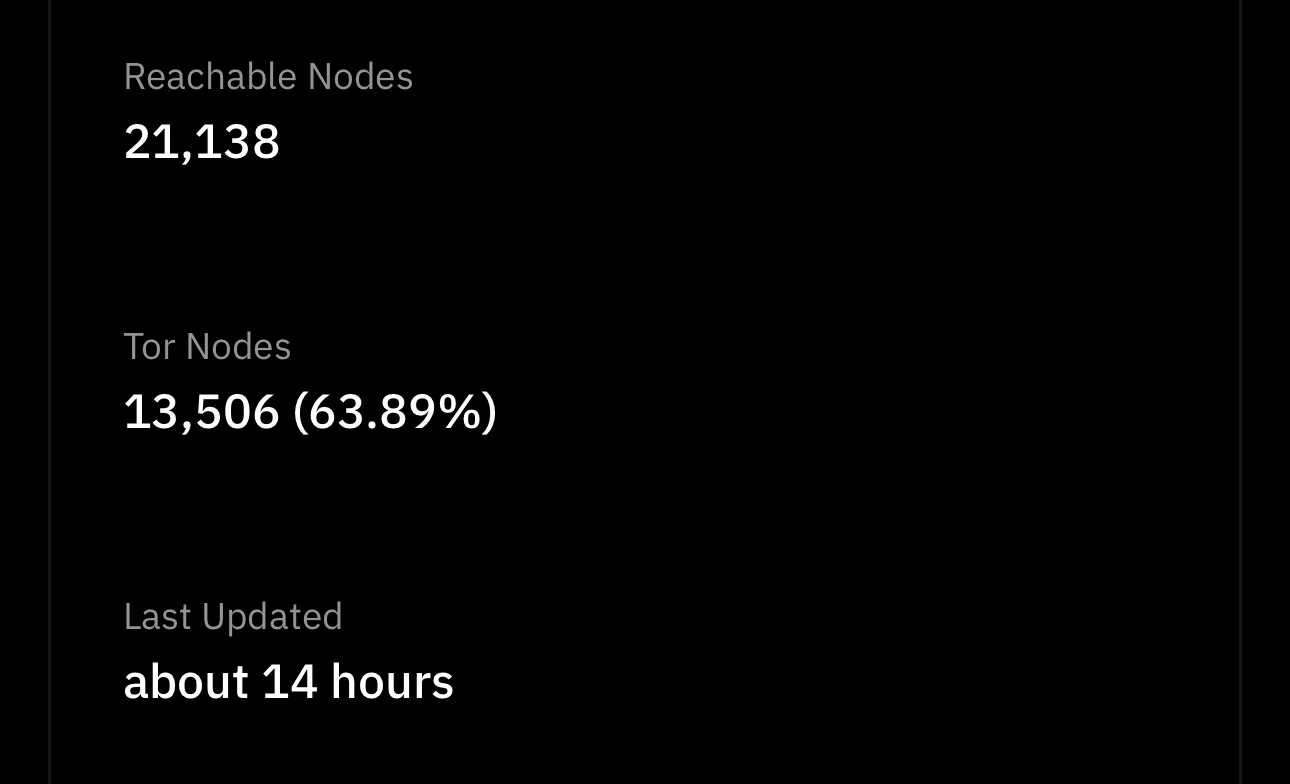

The core idea of Bitcoin is to establish a decentralized currency payment system that anyone can participate in without the approval or supervision of the government or banks. After more than ten years of development, Bitcoin is now used as legal tender in El Salvador and the Central African Republic, and countries such as the United States, Australia, Canada, and the United Kingdom have allowed Bitcoin to be used for legal payments.
Therefore, whether in terms of the degree of decentralization or its usage, Bitcoin is undoubtedly a digital commodity.
ETH
As the first blockchain network to support smart contracts, Ethereum is known for its decentralized applications, ERC token standards, security, decentralization, and innovation in the financial services sector. It provides developers with the infrastructure to build and deploy decentralized applications, while promoting the development of popular tracks such as DeFi and GameFi.
Crypto enthusiasts often refer to ETH as “digital oil”. Why?
First of all, ETH plays the role of basic fuel in the Ethereum network, which is used to pay transaction fees and acts as the fuel for transactions, that is, Gas. You have to use it to pay for various operations, such as sending transactions, purchasing services or goods, deploying smart contracts, etc. This is similar to the use of oil as fuel and energy in the real world, and it is a basic resource that drives various activities and applications. From this perspective, it is more inclined to commodity attributes and is mainly used as a medium of exchange or a payment method.
With the increasing number of applications on Ethereum and the increasing frequency of network activities, such as DeFi and GameFi, the demand for ETH is also growing. This growth in demand is similar to the increase in demand for oil during the industrialization process, which has driven up the value of ETH. At the same time, DeFi mining and LSDFi derived from ETH can be regarded as interest paid to ETH holders, which is a commodity premium.
It is worth mentioning that from the perspective of issuance and burning, the annual issuance rate of Ethereum ETH is even lower than that of Bitcoin BTC. Even in extreme narrative frenzy such as xxFi Summer, there may be a deflationary situation where the burning amount is greater than the issuance amount. This deflationary characteristic is similar to the scarcity of oil resources.
Since Ethereum switched to the PoS mechanism, the issuance mechanism of ETH has undergone significant changes. PoS rewards users for holding and staking ETH to maintain network security. This mechanism makes the newly issued ETH linked to the security and vitality of the network.
When Ethereum adopts the POW mechanism, a block is generated approximately every 14 seconds, and the generator of each block receives a reward of 2 ETH. In fact, the number of newly added ETH is approximately 4.5 million per year (that is, approximately 12,300 are released every day).
When the POS mechanism is adopted, the issuance model also changes: that is, the rewards for staking validators, the more they stake, the lower the yield, and the less they stake, the higher the reward, thus achieving self-regulation.
It can be seen from the table below that after adopting the POS mechanism, assuming that the annual ETH inflation rate is determined to be no higher than 1.71%, the range of new ETH is roughly 180,000 to 2.09 million per year (that is, about 4.96-5,700 per day).
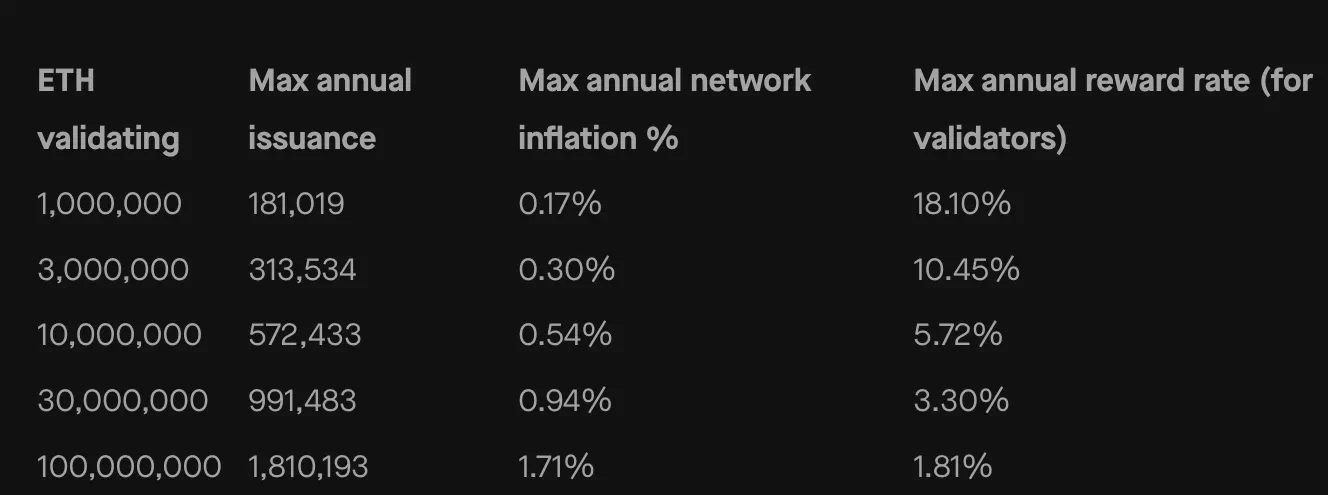
In 2021, the Ethereum Foundation introduced the EIP-1559 burning mechanism.
EIP-1559 improves Ethereums transaction fee structure. The BaseFee in each transaction will be burned in full, and the Priority Fee will be paid directly to miners.
This means that the higher the network usage rate, the higher the BaseFee that reflects the degree of network congestion, and the more ETH will eventually be burned and destroyed.
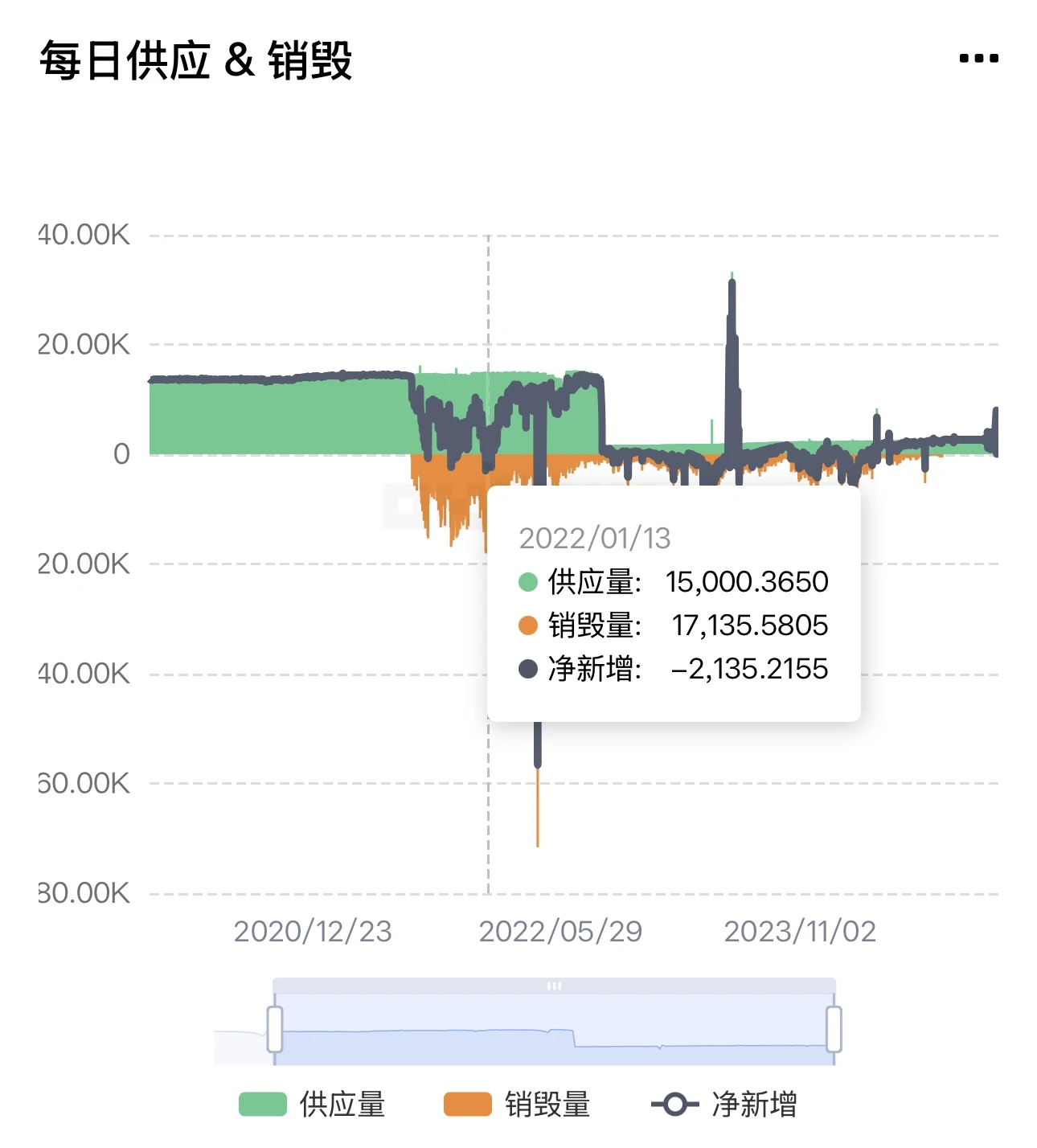
Let us now look at the status of burning and supply during the PoW and PoS periods through specific data.
As can be seen from the figure below, EIP-1559 was officially launched in August 2021. From this time to date, 4.54 million ETH have been burned and 7.81 million ETH have been issued, that is, the actual number of additional issuances is as high as 781-454 = 3.27 million.
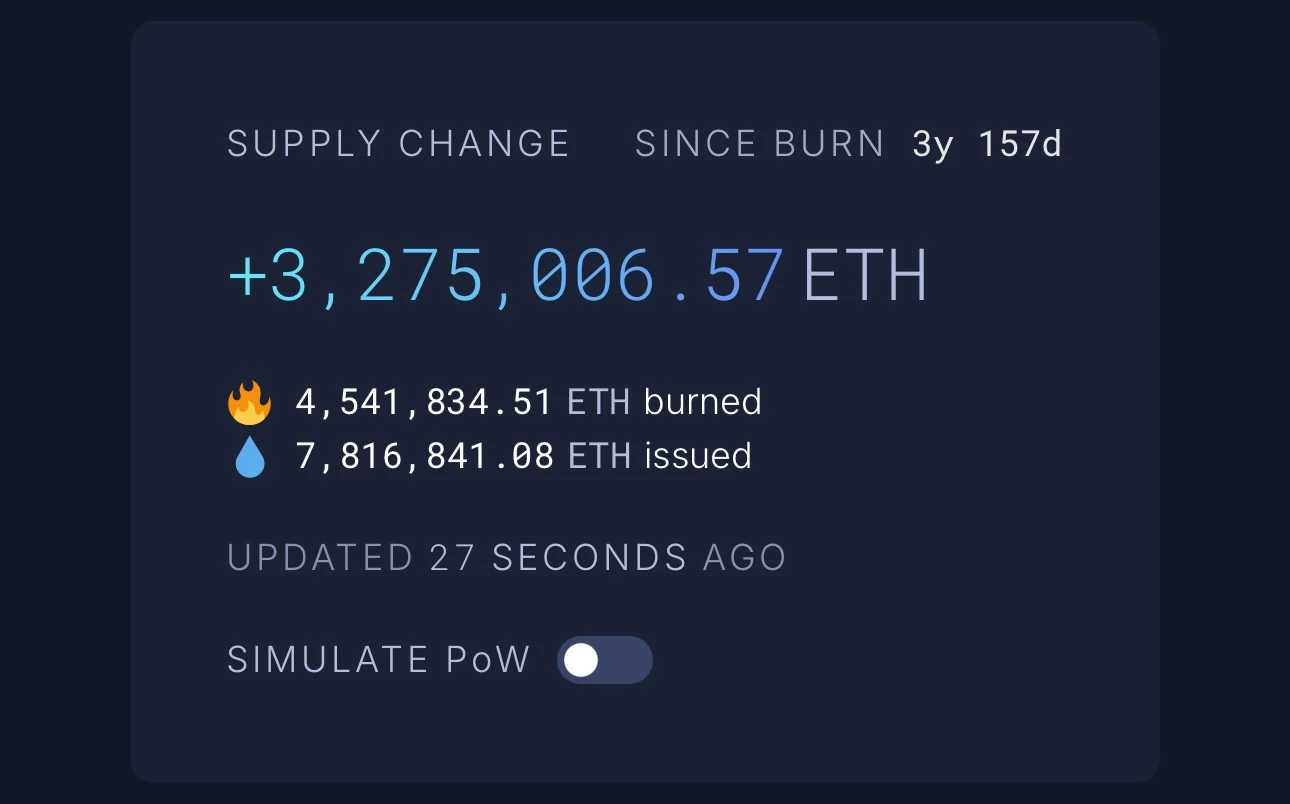
As can be seen from the figure below, in September 2022, Ethereum completed The Merge and switched to the PoS mechanism. From this time to date, 1.91 million coins have been burned and 1.87 million coins have been issued. In fact, after switching to PoS, the issuance and burning status is generally deflationary, about -40,669 coins.
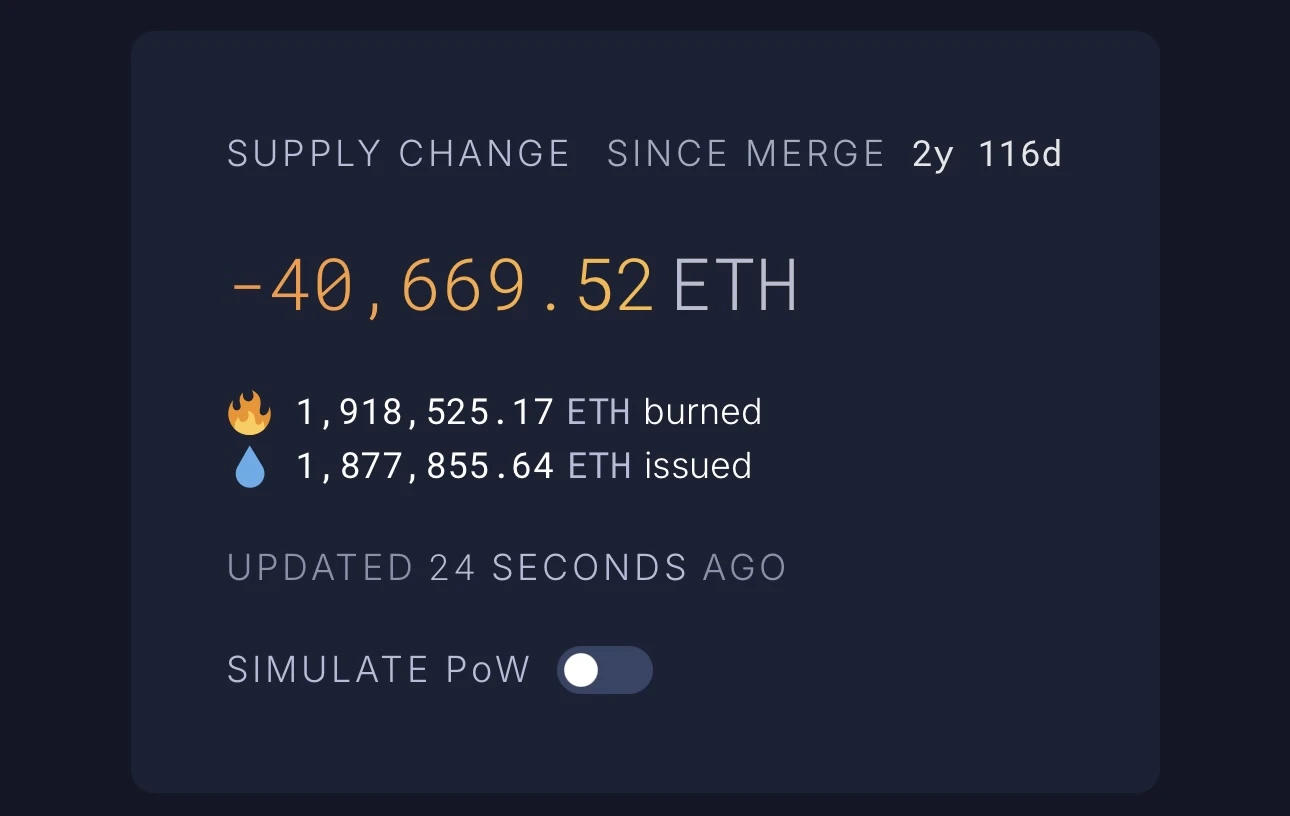
It is obvious from these two sets of data that:
1. From the perspective of burning, from August 2021 to September 2022, it was at the beginning of the end of the last bull market. In 11 months, the burning volume was as high as 454-191 = 2.63 million.
This period is at the beginning of the end of the bull market. According to the Gas price in the figure below, Gas is maintained between 30-156 US dollars, and the on-chain activities are still frequent. The network utilization rate is high and the burning volume is high.
However, it is unable to balance the newly added amount of 781-187 = 5.94 million during this period.
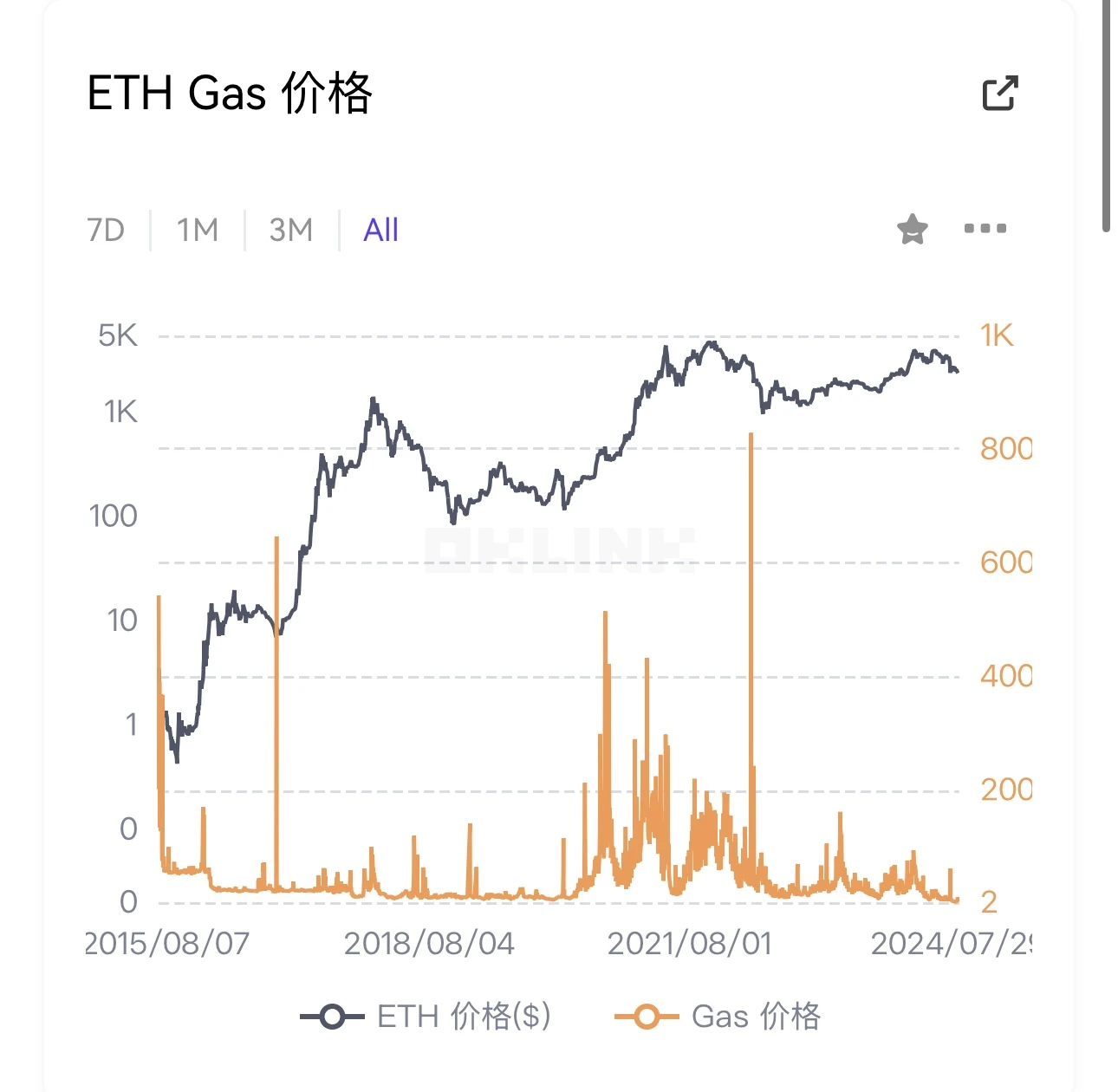
2. From the perspective of additional issuance, from August 2021 to September 2022, when it was still the PoW consensus mechanism, 5.94 million new tokens were issued. However, since the transition to PoS in September 2022, only 1.87 million new tokens have been issued.
Therefore, the issuance volume of PoS is much lower than that of PoW mechanism.
With the issuance and burning mechanisms running in parallel, we expect that when the markets attention is focused on the Ethereum network and a new wave of phenomenal narrative craze similar to DeFi Summer and AI Meme Season is triggered, the trading volume will increase significantly. If the trading volume is large enough, we have the opportunity to see the amount of ETH burned exceed the additional ETH, thus forming a deflationary phenomenon.
However, the current market focus is not on the Ethereum chain. The transaction volume and Gas fees are relatively low, and the issuance is greater than the burning, which is in a state of inflation. According to ETH Burned statistics, in the past seven days, ETH has cumulatively issued 18,199 and burned 8,711, that is, the total amount has actually increased by only 9,488, which has well controlled the inflation rate.
As shown in the figure below, Ethereum currently adds about 0.411% per year, but compared with the PoW version of Ethereum 3.716% and Bitcoin 0.83%, it has remained low.
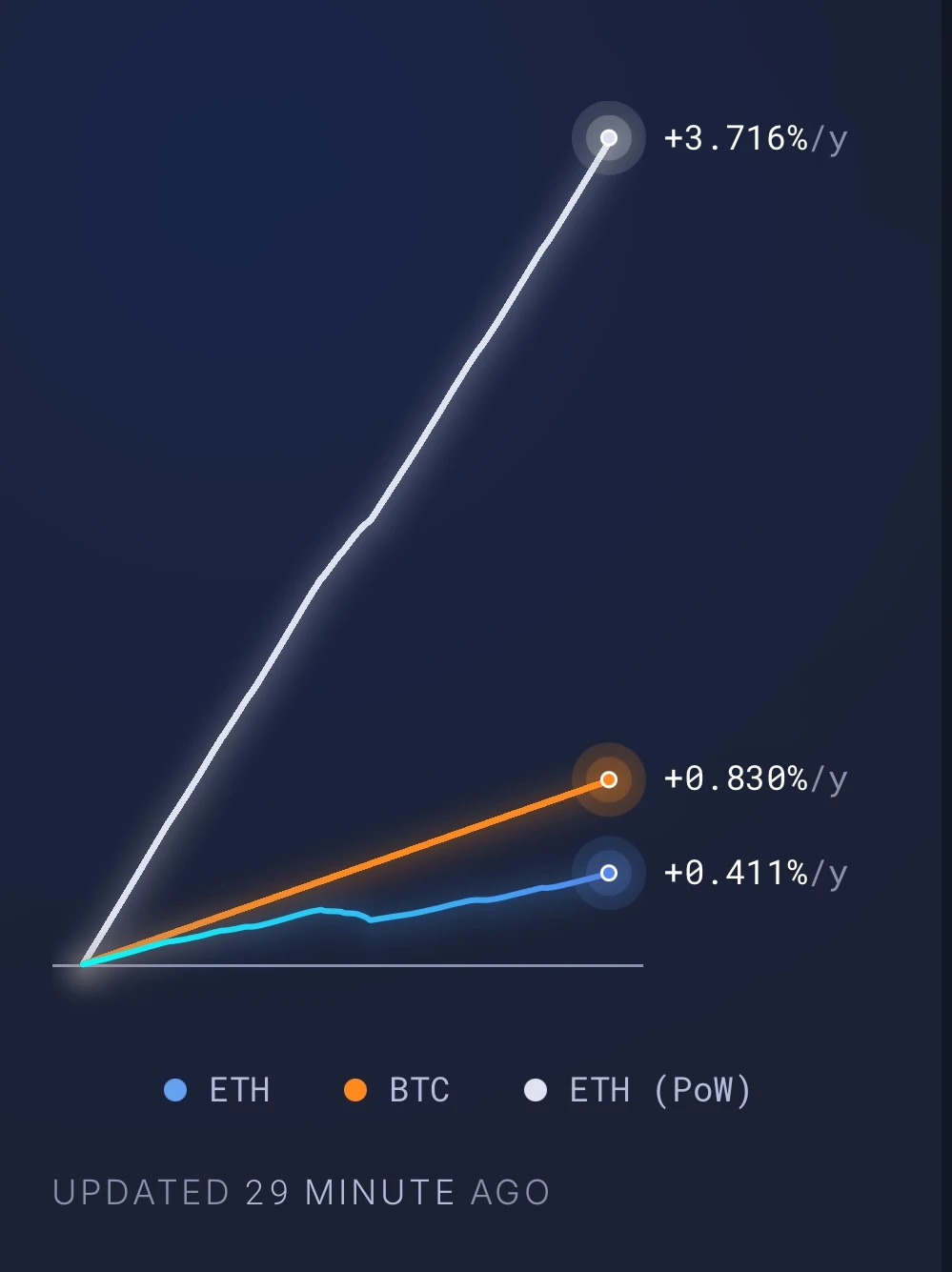
Finally, from a regulatory perspective, the Ethereum network is highly decentralized, without a centralized controlling entity. Although there is a known founding team, the current operation and development mainly rely on the community. Protocol-level upgrades come directly from proposal governance.
Looking at the top 10 ETH holdings, except for the first place, which is the ETH 2.0 staking contract, which accounts for 46.06% of ETH, the rest, whether personal wallet addresses or contract addresses, hold no more than 3% of ETH.
According to FIT21s decentralization approach, this further supports ETHs commodity attributes.
Other L1s similar to ETH are all Gas tokens of their own chains, and are the core of the ecosystem built around them. The token holding address does not exceed 20%, and we all think it is a commodity attribute. But here we need to focus on L2.
ETH L2
The Ethereum ecosystem is already very large. Not only does it have a prosperous L1 ecosystem, but there are also more than 100 L2s with various verification forms such as Rollup, Optimium, zkRollup, etc. Each L2 is its own ecosystem.
The decentralization of L2 block producers is not as important as L1, which means that tokens are not necessary. Optimism and Arbitrum have worked well without tokens before. ETH has a special function in all L2s, which is the gas token of all L2s .
Why does L2 use ETH as the Gas token?
The creation of Ethereum L2 is aimed at improving the scalability of Ethereum and reducing transaction fees, while inheriting the security and data availability of Ethereum .
The first is security. All transactions on L2 must eventually be confirmed and stored on L1. The second is data availability. In order for L2 data to be verified by the Ethereum main chain and ensure legitimacy, transaction data on L2 must be published on Ethereum. Both processes require the use of ETH to pay settlement fees and DA fees on Ethereum.
Even if L2s own native tokens can be used to pay L1, the tokens must still be converted to ETH first . For example, Starknet is the first of several well-known L2s that plans to support the use of its native token STRK to pay for Gas, but the validator is responsible for the conversion of STRK <-> ETH, and the exchange rate is quoted through a third-party oracle.
So what is the significance of L2’s own native token?
This brings us back to the L2 chain itself. Although L2 is as secure as L1 in terms of security, L2 usually uses a centralized sorter node in the execution layer of processing transactions, which is responsible for transaction sorting and packaging . Although this centralized design can provide a better user experience, lower fees, and faster transaction confirmation, it also brings potential censorship risks. For example, a centralized sorter can maliciously censor user transactions, squeeze MEV, and rush ahead.
In this case, how can we make the sorter decentralized? The current answer is tokens, decentralized through governance and block rewards. For example, token holders can participate in network governance by voting and decide the operating rules and parameters of the sorter.
This also explains why the vast majority of L2s will issue their own tokens, but most of their actual use is only to participate in governance.
Therefore, the native token of L2 is not the Gas of its own chain in essence, nor does it necessarily develop an ecosystem around the token (the vast majority is still dominated by ETH). It is only suitable for network governance and staking, and is more likely to be classified as a security at the regulatory level.
DeFi
The DeFi Summer of 2020 is a truly flourishing round of applications, with a large number of new protocols emerging, and old protocols such as UniSwap, Maker, and Aave reaching new highs. Every new chain and every Layer 2 launch is basically the same three major things: Swap, stablecoin, and lending. These three major things are commercialized in large quantities on every chain.
From a utility perspective, DeFi protocols provide financial services and products that are essentially similar to products in the traditional financial sector, which are generally considered to have securities attributes.
Moreover, most of the current DeFi protocols are still in a state of partial decentralization . Decentralization is only reflected in the application and governance layers, but the underlying code is still controlled by the core development team. This makes DeFi only suitable to be a security in FIT21. At the same time, according to the Howey test, DeFi protocol tokens meet the conditions of investment, profit expectations, common entities, and profits from the efforts of promoters or third parties, and should also be defined as securities.
Let’s take Maker as an example. Maker is one of the core lending protocols in the DeFi ecosystem and has earned approximately US$25 million in revenue in the past 30 days.
MKR is its governance token and currently has a governance function. MKR holders can participate in Makers governance and vote on changes and updates to the protocol, including adding new types of collateralized debt positions, modifying existing types of collateralized debt positions, modifying sensitive parameters, etc.
Here we will focus on analyzing the token mechanism of MKR.
Maker manages and adjusts the supply of MKR tokens through its unique stock buyback model. At the core of this model is a mechanism called the Surplus Buffer, which is the primary destination for all revenue of the Maker Protocol. The main purpose of the Surplus Buffer is to provide a first line of defense for loan gaps.
When there is a loan gap, the funds in the surplus buffer will first be used to fill the gap. Only when the funds in the surplus buffer are insufficient to fill the gap will the Maker protocol fill the debt by issuing additional MKR tokens. (There is currently no additional issuance data for the entire network, but the average daily transaction volume on the chain is as high as 120 million US dollars)
It is worth noting that the surplus buffer has a set cap. When the funds in the surplus buffer exceed this cap, the additional Dai will be used to buy back MKR tokens, and the repurchased MKR tokens will be destroyed before June 2023. This mechanism is designed to reduce the total supply of MKR, thereby providing value to existing MKR holders.
As of now, 22,368.96 MKR tokens have been repurchased and destroyed, which accounts for 2.237% of the total supply.
However, this mechanism was replaced by the newly launched smart burning engine in July 2023. When the surplus funds of the protocol exceed 50 million US dollars, Maker will automatically repurchase MKR and burn it. Otherwise, it will regularly accumulate LP from Uniswap (replacing the previous direct repurchase and destruction). Since July 2023, more than 22,335.1 MKR (about 35.19 million US dollars) have been repurchased and burned, accounting for about 2.23% of the total, with an average daily burn of 40.31 (about 63,500 US dollars).
A total of 22,368 MKRs were destroyed before June 2023, but after the launch of the new burning engine in July 2023, a similar number of 22,335 were destroyed in just 18 months. However, the faster burning speed is not due to the mechanism, but the RWA narrative that emerged in late 2023. Maker officially began to implement RWA in early 2023 and introduced US bonds. At that time, the income from the RWA part accounted for more than half of Makers total income.
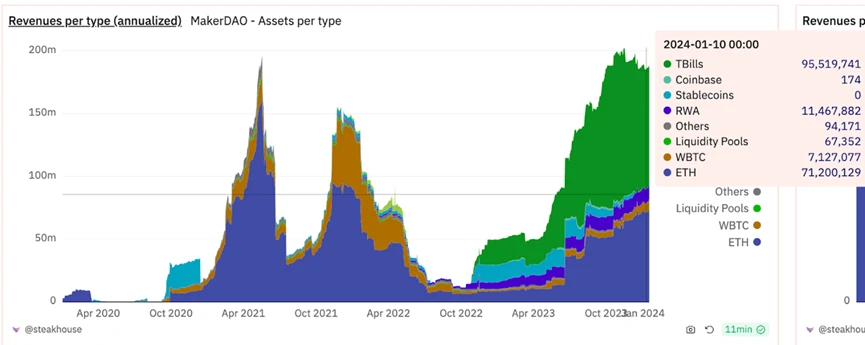
Although MKR has a burning mechanism in paying stability fees, which reduces the circulating supply through destruction and makes it scarce , it has the opportunity to be classified as a commodity based on the CFTCs judgment.
However, considering the protocol level, even though the current DeFi protocols usually use proxy contracts or multi-signature wallets to upgrade the protocol to minimize the centralization problem, the management authority of the smart contract is still controlled by a few people. At the same time, since token holders have governance rights, according to FIT21, DeFi protocol tokens such as MKR are more likely to be classified as securities.
Here we will focus on Uniswap’s native token UNI.
Whether in terms of transaction volume, user base, or technological innovation, Uniswap has always occupied an unshakable leadership position in the DeFi field.
Two months ago, Uniswap Labs officially announced the launch of Unichain, an Ethereum L2 network based on OP Stack, which is scheduled to be launched on the mainnet in January 2025. The launch of Unichain is not only a technological innovation, but also brings new usage scenarios and economic value to the UNI token, bringing about a transformation from a governance tool to a productive asset.
First of all, UNI tokens will become the core of the Unichain network, because the prerequisite for becoming a validator is to stake UNI tokens. Unichains verification network adopts a unique economic model that encourages users to stake UNI tokens to participate in network governance and revenue distribution.
This mechanism is equivalent to adding a practical function of staking to UNI, making it no longer just a governance token. While staking, users can not only help maintain network stability, but also obtain actual benefits through transaction fees and block rewards.
Whether it is the previous protocol governance or the current upgrade to an ETH L2, UNI is more inclined to securities attributes.
Jito is the leading LSD protocol in the Solana ecosystem, and its TVL has been steadily hitting record highs in 2024. During the recent Meme craze, Jitos LST token jitoSOL has an annualized interest rate of up to 8% due to the MEV revenue captured by its memory pool, far exceeding stETHs 3%. In other words, the greater the Meme craze on Solana, the higher the APY of jitoSOL.
As Jitos governance token, JTO has uses such as governance voting, MEV dividends, and staking, which are similar to shareholder rights in traditional securities and may be more inclined to securities attributes.
3. Decoding the unique classification method of FXS founder
Sam, the founder of Frax Finance, a long-established algorithmic stablecoin, proposed the concepts of type 1 and type 2. He believes that L1 Tokens are all Type 1, and all other dapp Tokens and L2 Tokens are Type 2.
This is basically consistent with the conclusions of our above-mentioned study.
His judgment logic is:
L1 tokens (ETH, SOL, NEAR, TRX, etc.) are the sovereign scarce assets of their own chain economies. They are the most liquid assets on the chain. Dapps accumulate them, use them to build DeFi, and incentivize liquidity, making them safe-haven assets in crises. In fact, if you think about it carefully, it is similar to the use and consumption in FIT21. L1 tokens are mainly used as a medium for consumer goods or services. Users use L1 tokens to pay or purchase services, and protocols build services around L1 tokens. L1 tokens are the core tokens of the on-chain economy.
Dapps issue their tokens to L1 asset holders through liquidity, ICO, DeFi, airdrops and other innovative forms, making L1 assets interest-bearing.
Dapp tokens represent actual human labor/GDP in that economy. L1 tokens generate interest on the labor of the people building the on-chain economy.
L2 tokens are usually not sovereign scarce assets in their digital economies, even though they have half the ingredients: an on-chain economy and vibrant builders. They are “type 2”. In fact, some L2s don’t even have tokens.
SOL is doing really well not because TVL is up, nor because people expect billions of dollars of SOL to be burned/earned in some distant year. ETH has billions of dollars of earnings/burns, and its not doing any better than SOL. The real reason SOL is going up is because the Solana on-chain economy uses it in liquidity pools, memecoin trading, DeFi, and you need it to participate in the Solana network state.
Finally, Sam expressed his vision to make FXS, which should have belonged to type 2, leap to type 1. How will this be achieved?
FXS has been the governance token of Frax Finance for the past four years.
Frax Finance launched the Ethereum L2 blockchain Fraxtal in February 2024, which is very similar to the Unichain we mentioned above. Only by staking FXS can you become a validator of the chain. In our and Sams conclusion, this still belongs to the type 2 category, or securities.
With Fraxtal, FXS actually has its own on-chain economy. But it still lacks an opportunity to become the core asset of this economy.
In February 2025, FXS will become Fraxtals Gas token through the Fraxtal hard fork and be renamed FRAX.
This approach makes FXS a type 1, FSX becomes the core asset of this on-chain economy, and all dapps must be built around FXS. Analogously, Uniswap, which also builds its own chain, even with Unichain, its core is still built around ETH, not UNI.
Frax Burn Engine
It is worth noting that the burning mechanism Frax Burn Engine will be launched in the future. The figure below shows the concept of the FRAX burning engine. In addition to serving as Fraxtals Gas, FRAX tokens will also be used to support other infrastructure services in the ecosystem.
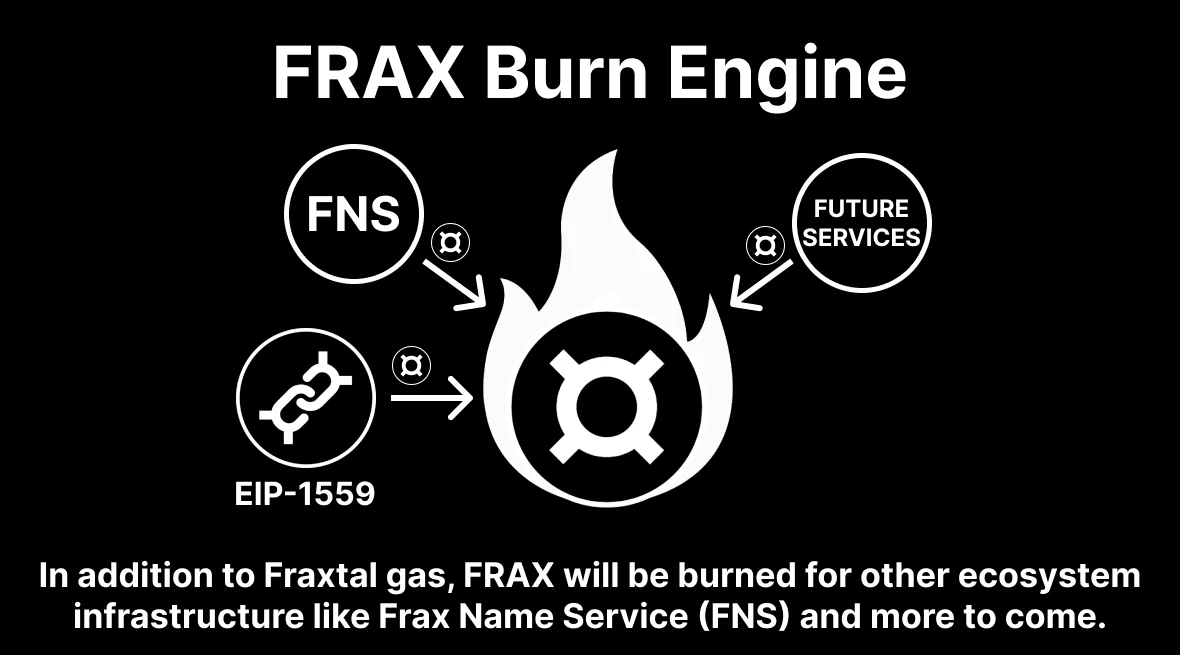
Frax Name Service, as well as Future Services, hint at some official protocols that will burn all/part of the revenue in the form of FRAX.
EIP-1559 is Ethereum’s burning mechanism, and FRAX may adopt a similar mechanism to reduce the supply by burning transaction fees.
The following figure shows the relationship between the burning and emission of FRAX tokens. There are three main variables: Burn, Supply, and Emissions.
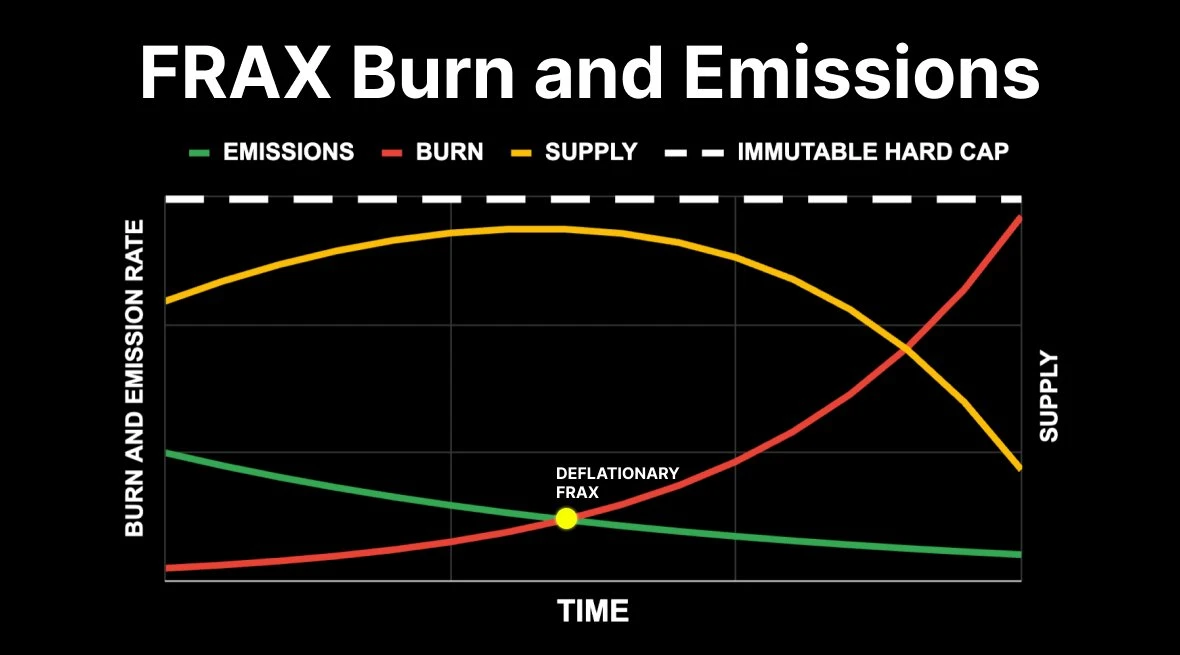
The red line represents the burn rate, which increases gradually over time. This means that as the ecosystem grows, a portion of FRAX tokens will be burned periodically, reducing the number of tokens in circulation.
The yellow line represents the supply, which reaches a peak and then begins to decline. This corresponds to the increase in the burn rate, indicating that the burning mechanism helps control the total supply of tokens and prevent inflation.
The green line represents the issuance rate, which is higher in the early stage and then gradually decreases. This may be related to the issuance of new tokens, which will decrease as the ecosystem matures.
The “DEFLATIONARY FRAX” label in the figure indicates that the FRAX token has deflationary properties. Deflation means that over time, the number of tokens in circulation will decrease, which usually causes the value of a single token to rise, thereby increasing the wealth of holders.
The dotted line in the diagram represents an immutable hard cap, which means that there is a fixed upper limit to the total supply of FRAX tokens. This design helps to enhance the scarcity of the token, which may increase its value.
4. “US content” may become a new trend: Which assets will usher in the “US compliance spring”?
In the months following the US election, XRP took over from Solana and experienced a significant rise. Recently, Ripple President Monica Long said in an interview that Ripples leadership has been in direct contact with the incoming US government, and she expects XRPs spot ETF to be approved soon. LTC is closely followed by Canary Capital, which recently submitted an application for a Litecoin ETF to the SEC, and LTC prices have soared. XRP and LTC have become the most favored assets of US capital after Solana.
In anticipation of the passage of FIT21, traditional US VCs/funds may vigorously purchase tokens related to US concepts. So, from this perspective, which tokens will become the favorites of US capital after SOL, XRP and LTC?
We have listed the top 100 tokens in terms of protocol revenue in the past year. You can select the most suitable token based on protocol revenue and the amount of “US” contained.
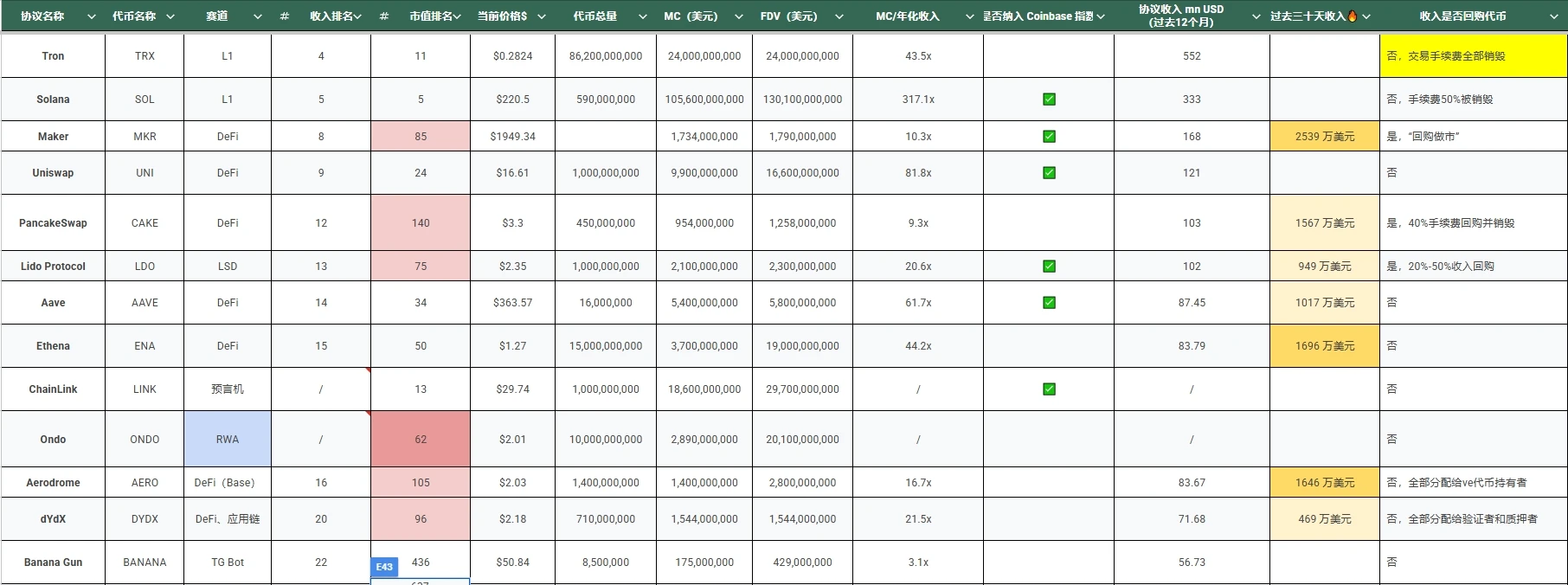
In terms of L1, the most suitable tokens are Avalanche (AVAX) and Near Protocol (NEAR). Since L1 is a commodity, it has the opportunity to be applied for as an ETF.
Avalanche ranks 24th in terms of protocol revenue. Its development team Ava Labs is headquartered in the United States and recently hinted that it will start a dialogue with the new US government. At the same time, Avalanche is extremely active in cooperation with traditional institutions. It has cooperated with JPMorgan Chase Onxy, Franklin Templeton and Citibank to create tokenized funds. American VCs such as a16z, Polygon, Galaxy, and Dragonfly invested in it in the early stage;
Near ranks 57th in terms of protocol revenue and has received early investments from US VCs such as a16z, Coinbase, Pantera, and Electric.
In terms of L2, the most suitable tokens are the well-known Arbitrum (ARB) and Optimism (OP). The protocol income is distributed between 30-50, and the team members are mainly located in the United States, and have received investments from American VCs such as a16z and DCG.
In terms of DeFi, most of the tokens that meet the conditions are those with high US dollar content in these DeFi protocols, and are more or less ambiguous with US institutions. In particular, they are Maker (MKR), Uniswap (UNI), Aave (AAVE), Ethena (ENA), Ondo (ONDO), Aerodrome (AERO) and Curve (CRV).
Maker ranks 8th in terms of protocol revenue, with revenue of $168 million in the past year, but its total token market value ranks only 85th. In addition to being led by a US team, US VCs such as Pantera and a16z also invested in it in the early stages.
Uniswap ranks 9th in terms of protocol revenue, with revenue of $121 million in the past year. Uniswap was created by American developer Hayden Adams and has received a Wells notice from the SEC. It is also invested by American VCs such as Pantera and a16z.
Aave and Ethena are also far ahead in terms of protocol revenue, at 14 and 15 respectively, and were recently bought by the Trump family project World Liberty.
As the only RWA protocol in the top 100, Ondo is well-known for its cooperation with BlackRocks BUIDL fund. It was recently bought by the Trump family project World Liberty, and has also received investments from US VCs such as Coinbase, Tiger Global, and GoldenTree.
Cruve and Aerodrome, which recently partnered with BlackRock, are also worth paying attention to.

